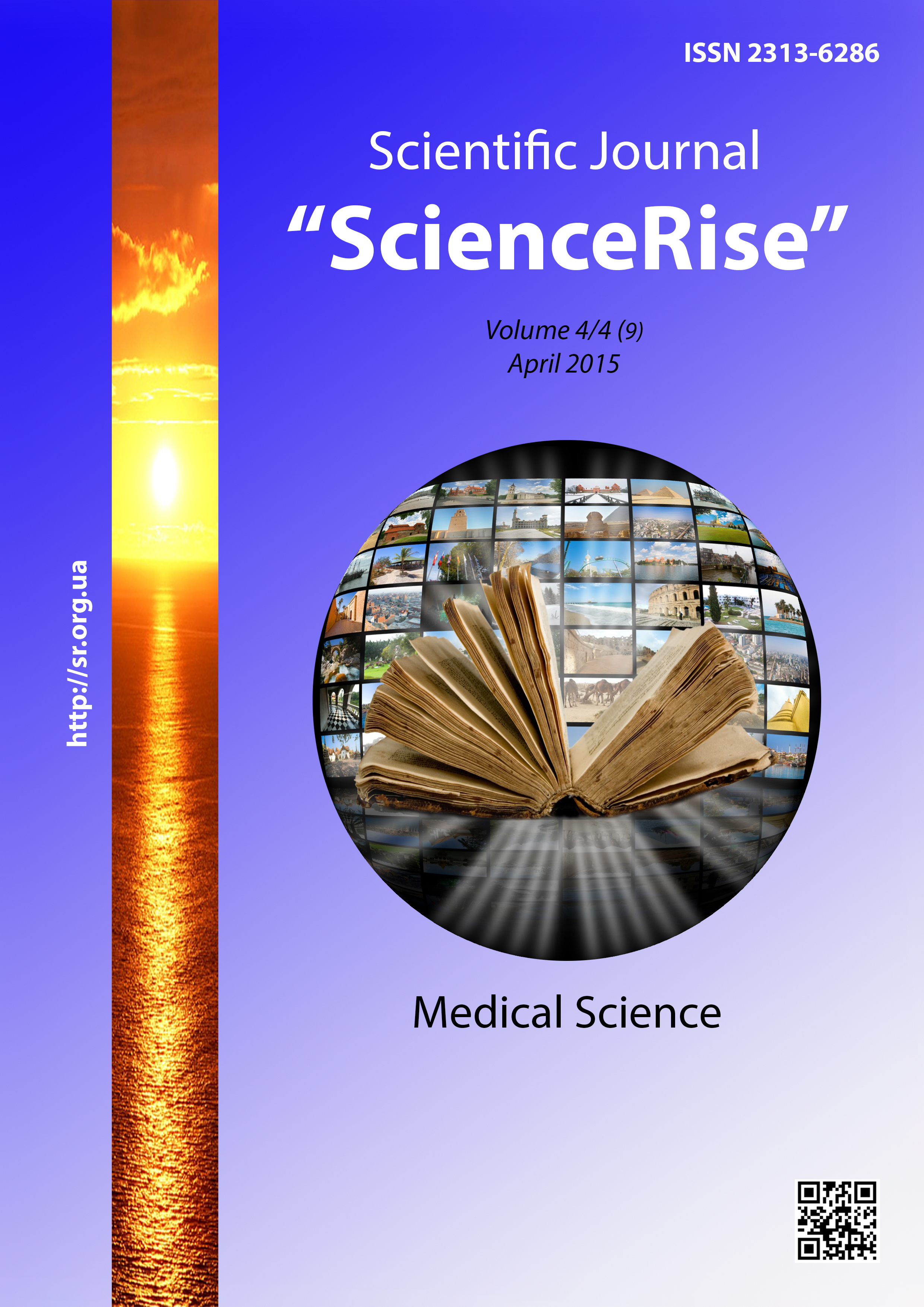Glycemia in conditions of hypothermia in patients with intracranial aneurysmal hemorrhage
DOI:
https://doi.org/10.15587/2313-8416.2015.41698Keywords:
intracranial aneurysmal hemorrhage, neuroprotection, preventive hypothermia, therapeutic hypothermia, hyperglycemia, insulinAbstract
Despite the proven effectiveness of hypothermia as a method of neuroprotection, the presence of significant side effects requires further development of detailed protocols of usage, especially glucose.
Aim: Improving treatment outcomes of patients with subarachnoid aneurysmal hemorrhage by preventing the development of hyperglycemia during systemic hypothermia.
Materials and Methods: The study involved 48 patients with spontaneous subarachnoid hemorrhage of aneurysmal origin. All patients were conducted intracranial surgery - clipping aneurysms of cerebral vessels during regression of arterial vascular spasm (AVS) in the systemic hypothermia prevention. Therapeutic hypothermia was performed in 29 patients with complicated disease course for 48 hours. It is evaluated the effectiveness of its own method of prevention and correction of hyperglycemia - permanent short-acting insulin before the warm saline at a dose of 2 units/hour during hypothermia
Results: During the prevention of hypothermia using methods of hyperglycemia episodes of above 10 mmol / L did not observe the rejection of a group of patients using the conventional method of correction of glycemia. Episodes of hypoglycemia do not observed in both groups of the study. Up to 48 hours of therapeutic hypothermia glucose levels remained stable, after 48 hours of hypothermia it is observed a significant increase in blood glucose that was cool termination criterion.
Conclusions: Holding insulin infusion at short-acting dose of 2 units/hour during prophylactic hypothermia prevents episodes of hyperglycemia and consequently helps to maintain homeostasis. Carrying insulin infusion at short-acting dose of 2 units/hour during therapeutic hypothermia promotes stable blood glucose levels to 48 hours. After 48 hours of hypothermia in 51.72% of patients experienced a significant increase in blood glucose, which is one of the criteria for termination of cooling
References
Arpino, P. A., Greer, D. M. (2008). Practical Pharmacologic Aspects of Therapeutic Hypothermia After Cardiac Arrest. Pharmacotherapy, 28 (1), 102–111. doi: 10.1592/phco.28.1.102
Forni, A. A., Rocchio, M. A., Szumita, P. M., Anger, K. E., Avery, K. R., Scirica, B. M. (2015). Evaluation of glucose management during therapeutic hypothermia at a Tertiary Academic Medical Center. Resuscitation, 89, 64–69. doi: 10.1016/j.resuscitation.2015.01.002
Polderman, K. H. (2009). Mechanisms of action, physiological effects, and complications of hypothermia.Critical care medicine, 37 (7), 186–202. doi: 10.1097/CCM.0b013e3181aa5241
Steiner, T., Juvela, S., Unterberg, A., Jung, C., Forsting, M., Rinkel, G. (2013). European Stroke Organization Guidelines for the Management of Intracranial Aneurysms and Subarachnoid Haemorrhage. Cerebrovascular Diseases, 35(2), 93–112. doi: 10.1159/000346087
Gal, R., Smrcka, M. (2008). Mild hypothermia for intracranial aneurysm surgery, Bratisl Lek Listy., 109 (2), 66–70.
Dudukina, S. O. (2012). Sposib korectcii hyperhlicemii v umovah hypotermii – Way of hyperglycemia correction during hypothermia. Patent of Ukraine №74945, А61P 3/10, A61P 5/50, A61K 38/28. [in Ukraine]
Nasledov, A. (2011). SPSS 19: professional'nyj statisticheskij analiz dannyh. SPb.: Piter, 400.
Downloads
Published
Issue
Section
License
Copyright (c) 2015 Світлана Олександрівна Дудукіна

This work is licensed under a Creative Commons Attribution 4.0 International License.
Our journal abides by the Creative Commons CC BY copyright rights and permissions for open access journals.
Authors, who are published in this journal, agree to the following conditions:
1. The authors reserve the right to authorship of the work and pass the first publication right of this work to the journal under the terms of a Creative Commons CC BY, which allows others to freely distribute the published research with the obligatory reference to the authors of the original work and the first publication of the work in this journal.
2. The authors have the right to conclude separate supplement agreements that relate to non-exclusive work distribution in the form in which it has been published by the journal (for example, to upload the work to the online storage of the journal or publish it as part of a monograph), provided that the reference to the first publication of the work in this journal is included.

